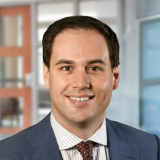I was just a kid when I learned what it meant to love someone through the glass of an incubator.
When my baby cousin was born with a severe heart defect, she was rushed to the NICU before anyone could hold her. While other families cradled new life, we stood still, separated by plexiglass, watching her chest rise and fall beneath a tangle of wires.
That was my first glimpse of congenital heart disease (CHD). It wouldn’t be my last.
CHD is the most common congenital disability in the U.S., affecting nearly one in every 100 babies. Today, as a pediatrician, I care for families like mine — families who live at the intersection of love, fear, and a health care system that too often fails them.
The day that we become parents is said to be the most wonderful day of our lives. There is no instruction manual provided or training course offered. Just a newborn, a pat on the back, and the quiet hope that love will be enough. You pray for your child’s safety, guide their choices, and trust that what you’ve given will carry them forward. But for families raising a child with CHD, that hope stretches thin. The future isn’t measured in milestones, but in surgeries, heartbeats, and the fragile quiet between monitor alarms.
As a pediatrician, I’ve seen how that love collides with a system unequipped to support it — how the emotional toll is only compounded by financial strain, missed work, and impossible choices. The data tells a sobering story. Nearly half of all U.S. families caring for a child with CHD report financial hardship from medical bills, with 17% unable to pay at all. And the costs are truly staggering. According to a report published by Additional Ventures in April 2024, the average cost to a parent in the first five years following a CHD diagnosis is roughly $650,000, of which families pay about $190,000 out of pocket. Indirect costs, such as lost wages and caregiving, further compound the financial and emotional burden.
And if you rely on insurance as a financial lifeline, the grim reality for these families is that this theoretical safety net between stability and disaster is often riddled with holes the size of an SUV. Families with private insurance often struggle the most, facing higher rates of food insecurity and delayed care because of steep deductibles and copayments. According to an NIH study published in December 2020, nearly two-thirds of families with unpaid medical bills experience food insecurity, compared to only 14% among families without such debt. Behind the numbers are real-life consequences — groceries left at the register, school lunches missed, and fridges that stay empty.
At the same time, frequent hospital stays add thousands of dollars in out-of-pocket expenses for parents of a child with CHD, including gas, lodging, and food incidentals. And while it is true that some nonprofit organizations like the Ronald McDonald House were created to lessen this burden, the fact is that not all families have logistical access to them. A federal stipend or tax credit would acknowledge these unpredictable costs and make care more attainable, especially for the most vulnerable populations.
The emotional toll, while surely harder to quantify, is no less real. According to a study published by Springer Nature, a leading global research and educational publisher, “Parents of children with CHD have a high prevalence of posttraumatic stress disorder symptoms, depression, anxiety, and severe psychological distress.”
I still remember when my aunt received the news that her baby had a heart defect, and the whirlwind of anguish that followed — the nonstop appointments, lab tests, uncertainty, and the indescribable emotional trauma of not knowing whether your daughter was going to survive long enough to be held. After birth, the NICU became my aunt’s second home. She learned to read oxygen levels, decipher beeps, and, heartbreakingly, to love her baby through quarter-inch plexiglass.
But love alone wasn’t enough to hold everything together.
She left work to care for her daughter, but the bills never stopped. I still remember the quiet stress in her voice as she checked her wallet or shuffled through receipts, trying to make sure she had enough for the drive to the hospital. Just like her incredibly strong little girl, she was holding on for dear life.
I carry that memory with me into every pediatric exam room. I’ve cared for countless families navigating the same relentless uncertainty. And that’s the thing about CHD. It never stops. The trauma begins before birth and involves major surgery in the first days of life. It’s followed by years of monitoring, checkups, and constant anxiety. It’s lifelong cardiology visits, arrhythmia monitoring, and the looming possibility of failure in a surgically rebuilt heart or eventual transplant. This relentless emotional and medical intensity takes a toll on both the patient and the family. It is sustained, exhausting, and often invisible. It deserves more than sympathy. It deserves support.
All of this clearly demonstrates an urgent need for policy reform. While the Family and Medical Leave Act provides up to 12 weeks of unpaid leave, this falls far short of the needs of those caring for a chronically ill child. A national paid family leave program, like plans established in Massachusetts and California, would ease the burden on parents and, more importantly, allow them to focus on their child while not worrying about rent.
The time for words has passed. The time for action begins now. In its current state, the medical insurance system is a smokescreen unable to address indirect costs, emotional distress, and the caregiving costs that quite literally span a lifetime. By reimagining policies to match the nuanced complexities of a condition like CHD, we would be affirming that a child’s life is priceless. Because no parent should ever be put in the situation of choosing between survival and care.
How have you seen the cost of medical care affect your patients? Share in the comments.
Joshua Vasquez, MD is a pediatric resident in Oregon planning to pursue a fellowship in pediatric cardiology. He has developed hands-on cardiac education tools for underserved youth and leads outreach focused on congenital heart disease and health equity. His commitment to advancing equity within the field has been recognized both locally and nationally, earning him the OHSU Diversity, Equity and Inclusion Champion Award and the 2025 Rising Leader Award from the AAP Council on Health Equity.
Illustration by April Brust







